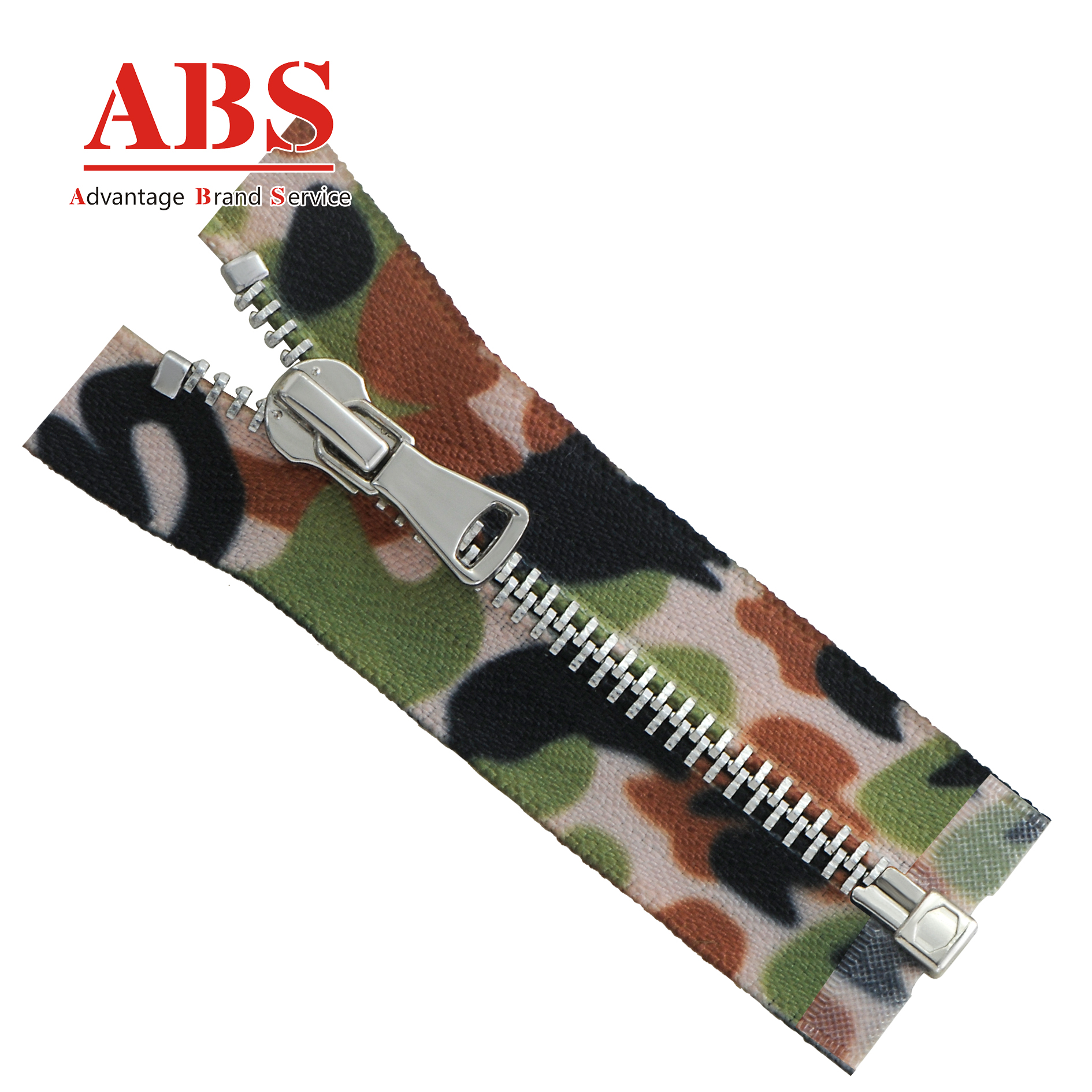Rainy weather can present numerous challenges, especially when it comes to keeping clothing and gear dry. Waterproof Zippers are an essential component in rainwear, offering protection against the elements while maintaining functionality and style. In this comprehensive article, we explore the significance of waterproof zippers, examining their evolution, science, and applications in the context of modern rain gear.
Evolution of Waterproof Zippers in Rain Gear
● History of Zippers in Rainwear
The integration of zippers into rainwear dates back to the early 20th century, revolutionizing garment design by providing a more convenient closure mechanism compared to buttons. As materials and technologies advanced, the need for waterproof zippers became evident, leading to innovations that would cater to the demands of outdoor enthusiasts and professionals alike.
● Advancements in Waterproof Technology
Over the decades, zipper manufacturers have developed new materials and coatings to enhance water resistance. The introduction of laminated tapes and protective coatings marked significant milestones, enabling waterproof zippers to effectively prevent moisture penetration even in torrential downpours.
The Science Behind Waterproof Zippers
● How Waterproof Zippers Function
Waterproof zippers are designed with specialized seals and coatings that provide a barrier against moisture. These zippers typically feature a polyurethane or rubberized coating over the zipper teeth, creating a watertight seal that prevents water from seeping through the zipper's interlocking elements.
● Materials Used in Waterproof Zipper Production
Manufacturers utilize a range of materials including nylon, polyester, and thermoplastic polyurethane (TPU) to create waterproof zippers. These materials are chosen for their durability, flexibility, and ability to withstand extreme weather conditions, ensuring the longevity of the zippers in various applications.
Comparing Waterproof Zippers with Storm Flaps
● Advantages and Disadvantages of Each
While storm flaps provide an additional barrier by covering the zipper, waterproof zippers offer a streamlined design that reduces bulk and potential points of failure. Storm flaps can add weight and complexity, whereas waterproof zippers are often lighter and more versatile.
● Situational Suitability of Zippers vs. Flaps
In moderate conditions, waterproof zippers suffice on their own, providing adequate protection against light rain. However, in extreme weather with high winds, the combination of waterproof zippers and storm flaps may offer superior defense against water infiltration.
The Role of Waterproof Zippers in Jacket Design
● Integration in Modern Rain Jackets
Designers incorporate waterproof zippers to enhance the functionality and aesthetic appeal of rain jackets. These zippers are strategically placed to ensure easy access and secure closure, complementing the overall design without compromising on waterproof performance.
● Impact on Overall Jacket Aesthetics
The sleek look of waterproof zippers contributes to the modern and streamlined appearance of contemporary rain jackets. By eliminating the need for bulky storm flaps, designers achieve a minimalist look that appeals to fashion-conscious consumers.
Waterproof Zipper Durability and Longevity
● Common Issues and Solutions
Despite their durability, waterproof zippers may face issues such as coating wear or stiffness over time. Regular maintenance, including lubrication and gentle cleaning, can mitigate these issues, prolonging the zipper's lifespan.
● Maintenance Tips for Extending Lifespan
To ensure the longevity of waterproof zippers, users should regularly inspect and clean them, removing dirt and debris that could impair their functionality. Applying a suitable lubricant can also help maintain their ease of operation and prevent the zipper from becoming stiff.
Consumer Perceptions and Misconceptions
● Market Trends and Consumer Preferences
Consumers often prioritize functionality and durability when selecting rain gear, leading to increased demand for high-quality waterproof zippers. However, misconceptions persist, with some users doubting the efficacy of these zippers compared to storm flaps.
● Common Myths About Waterproof Zippers
A prevalent myth is that waterproof zippers are inherently less durable than traditional zippers. However, advancements in technology have debunked this belief, showing that modern waterproof zippers can withstand rigorous conditions without compromising their integrity.
Environmental Impacts of Waterproof Zippers
● Production and Disposal Implications
The production of waterproof zippers involves various materials and processes that can impact the environment. Sustainable practices, such as using recycled materials and eco-friendly coatings, are becoming increasingly important in mitigating these effects.
● Sustainable Alternatives in Zipper Technology
Companies are exploring the use of biodegradable materials and environmentally-friendly production methods to create sustainable waterproof zippers. These innovations aim to reduce the carbon footprint associated with zipper manufacturing while maintaining high performance standards.
Practical Applications in Different Weather Conditions
● Performance in Various Rain Intensities
Waterproof zippers are designed to perform reliably in a range of weather conditions, from light drizzles to intense storms. Their ability to maintain a watertight seal ensures that the wearer's body and belongings remain dry, regardless of the rain's intensity.
● User Experiences and Testimonials
Testimonials from outdoor enthusiasts and professionals highlight the importance of waterproof zippers in maintaining comfort and protection during rainy weather. Users appreciate the convenience and reliability of these zippers, especially in scenarios where quick access and secure closure are crucial.
Innovations and Future of Waterproof Zippers
● Emerging Technologies and Features
The future of waterproof zippers lies in the integration of smart technologies, such as moisture sensors and self-sealing mechanisms. These innovations promise to enhance the functionality and user experience, offering new levels of protection and convenience.
● Potential Developments in Zipper Functionality
Advancements in materials science may lead to even more flexible and durable waterproof zippers, capable of withstanding extreme conditions. Collaborative efforts between manufacturers and researchers are expected to drive these developments, setting new benchmarks in zipper performance.
Expert Opinions on Waterproof Zippers vs. Storm Flaps
● Insights from Industry Leaders
Industry experts emphasize the importance of selecting rain gear based on specific needs and conditions. They advocate for the use of waterproof zippers in most scenarios, given their balance of weight, functionality, and protection.
● Recommendations for Specific Outdoor Activities
For high-intensity activities such as hiking or biking, experts recommend rain gear with waterproof zippers to minimize bulk and maximize mobility. In contrast, storm flaps may be more suitable for stationary activities in severe weather conditions, where added protection is paramount.
In conclusion, waterproof zippers play a vital role in enhancing the performance and design of rain gear, offering essential protection against the elements. As technology continues to evolve, these zippers are poised to become an indispensable component of outdoor apparel, ensuring comfort and reliability for users worldwide.
● About ABS Zipper
ABS Zhejiang Chuangfa Zipper Technology Co., LTD., established in 2011, specializes in the production, sale, and service of zippers and buttons. Located in Zhejiang Haining Industrial Zone, ABS Zipper provides convenient access to major transport hubs. Their products, including zippers, buttons, and hardware, are exported globally, covering regions such as the Americas, Europe, Southeast Asia, and Africa. The ABS brand is renowned for its quality and innovation, holding a registered trademark in 102 countries. ABS Zipper continues to lead the industry through continuous product and service innovation, emphasizing sustainability and customer satisfaction.












